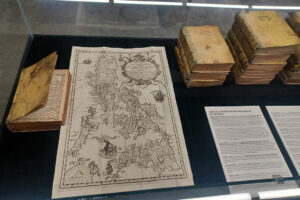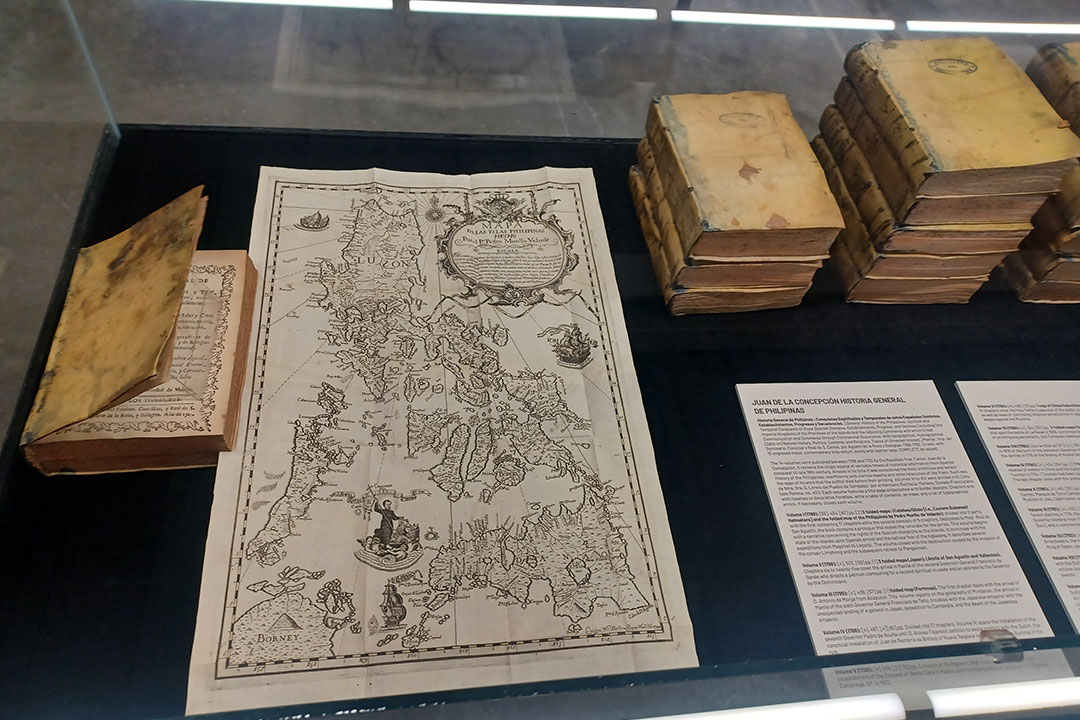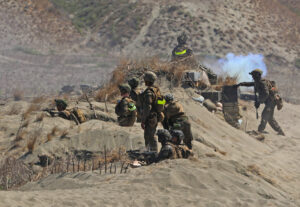
Where to buy antique maps and prints

FROM the work of cartographers who first charted the Philippines in the 16th century to World War II maps used by Japanese or American forces for wartime strategy, Gallery of Prints has remained a valuable source of antique maps and prints that give insight into Philippine history. Small wonder historian Ambeth Ocampo is a regular visitor.
Within the gallery’s vast showroom in Parañaque City lies an abundance of original historical printed material about the Philippines, starting with Magellan’s initial visit to the islands in 1521.
Although everything in their care is original, Gallery of Prints keeps their prices appropriately proportionate for local purchase said Amber Imai, gallery supervisor.
“Compared to international trading companies, because almost all our maps are focused on the Philippines, there’s this idea of repatriation, so at least what we offer is accessible for Filipinos,” she told BusinessWorld in an exclusive tour of the showroom on Oct. 24.
Maps range in price from P2,000 to P2 million, depending on their age, size, and quality. “We have old stuff from the 1500s, but because of quality, they’re priced very low, due to burnt edges, staining, molds. In good quality, small maps from that time come up to P10,000,” she said.
One of the crown jewels of the collection is the extremely rare, hand-colored copper engraving Terza Tavola or India Orientalis map from 1563, which serves as the Philippines’ “birth certificate,” since it is the first printed Western map showing an iteration of the name “Filipina.”
There’s also the Philippinae Insulae from 1616, the second version of the oldest map showing the Philippines alone. Meanwhile, the sketch of the Manila port from the 1619 Spilberghen expedition offers a rare printed view of Manila Bay, featuring an attacking fleet and a smoking Taal Volcano.
Gallery of Prints also has for sale a reproduction of the 1734 Philippine map by Jesuit friar Pedro Murillo Velarde (they also have an original, but it is not for sale). It remains relevant to this day, used as proof that Scarborough Shoal and the Spratly Islands are part of the Philippines. In the map, they are labeled as Panacot shoal and Los Bajos de Paragua, respectively.
“Not a lot of people are interested in maps, but I think there’s a growing number. It’s like art collection as well, in that you can spend a lot, but the appreciation value is volatile and subjective,” Ms. Imai said. “But whereas art depends on the market and overall crowd, cartography and antique maps are very stable investments.”
“Ultimately, it’s for people who like history and adjacent hobbies. We do want younger people to start collecting maps more. It’s just that not a lot of people know about it, and they don’t realize the importance of maps in relaying information,” she added.
SINCE 1996Major cities all over the world boast of at least one art gallery specializing in antique prints. Gallery of Prints, which opened in 1996, is the first and only one in the Philippines. Their inventory has over a thousand items, spanning five centuries.
Its owner, Rudolf J.H. Lietz, is a German who lives in the Philippines to run his raw materials and export business — which is why the showroom is located in the Lietz Industrial Complex in Parañaque.
In a vast, well-lit, airconditioned space, the large collection is divided into two, with 16th and 17th century maps on the ground floor, and 18th and 19th century maps on the second floor.
“Actually, we only transferred here in July of 2024. We previously occupied a small gallery space in the 3rd level of Glorietta, but that was only half the size of this showroom. Here, we get to showcase what we have a lot better,” said Ms. Imai.
On the second floor, a collection of interactive globes attracts the eye, but there are also lithographs of flora, fauna, and ethnographic images. One can peruse sketches of Philippine hawk eagles, cockatoos, and kingfishers, as well as jackfruits and scenes of natives pounding rice.
There are shelves of antique books and publications specializing in, but not limited to, the Philippines. Themes cover a wide range including Southeast Asian history, anthropological study, and wartime accounts.
For Ms. Imai, their collection of old magazines like the Illustrated World and Harper’s Weekly gives an insight into history, some issues mentioning Emilio Aguinaldo and the Philippine-American War. One can also spend a whole afternoon looking at materials on World War II alone.
“For example, there’s an American air force chart map made of silk, so that when you eject from an airplane and you have to navigate in waters, you have an emergency map that can get wet. I believe it’s included in escape kits on the plane,” she explained.
A COMPLETE COMPENDIUMMr. Lietz, who founded the Philippine chapter of the International Map Collectors Society, also published a comprehensive compendium of the antique prints in the gallery’s collection.
Titled The Philippines in the 19th Century – A Collection of Prints, the book was published in 1998, along with postcards, reproductions, and other individual items intended to showcase the Philippines of the past to a broader audience.
“It’s available as a coffeetable book in many museums and bookshops. If you don’t want to invest in everything here, you can just have a copy of this book, which costs just P3,500. It covers everything we have from the 19th century,” Ms. Imai said.
She added that they are working on the second book, focusing on their 18th century prints collection, set to come out sometime next year.
The Gallery of Prints is a member of the Antiquarian Booksellers’ Association, the UK’s leading trade body for experts in rare books, manuscripts, and prints. It is also part of the International League of Antiquarian Booksellers.
Because of this, it aims to set the standard for antique maps, prints, and books collection and awareness in the Philippines, according to Ms. Imai.
“It’s not just out of sheer hubris that we collect — because there are collectors out there who want things just because they are worth a lot but store them improperly,” she said. “Here, we take a good amount of care, keeping things in a cool place and handling them so that they don’t fold or tear or deteriorate.”
In keeping with Mr. Lietz’s primary business, the gallery also offers ancillary services such as acid-free, museum-style conservation matting and framing. Rudolf Lietz, Inc. provides the gallery’s in-house picture hanging systems, which many galleries, architects, and interior decorators in the Philippines use to design or furnish their spaces.
Everyone is welcome to schedule a visit to the showroom through Gallery of Prints’ social media pages. For Ms. Imai, there’s no use gatekeeping the treasures that they have.
“It’s worth a lot in terms of knowledge. Each object here shows a unique, important perspective of Philippine history that we’ve ignored or we’re just not aware of, and we actually have access to that.” — Brontë H. Lacsamana



